2013.10.27 10:55
27 October
The diaphragm is a fluctuating separation. As it separates, it contracts and relaxes. In terms of time, it has an effect on both the time that comes before it and the time that comes after it. Even for a time, the plane of the present is slicing through the diaphragm with the stomach, liver, kidneys (etc.) on one side and the lungs on the other side, all of which is encased within the rib cage. As time goes on, the lungs gradually take up more space and the digestive system takes up less, with the diaphragm always separating them. The diaphragm remains the ever effective mediator between the realm of assimilation and metabolism and the realm of osmosis. The diaphragm is something like a two-way mirror--its movements create pressure which in turn facilitates both breathing and defecation, input vs. purge.
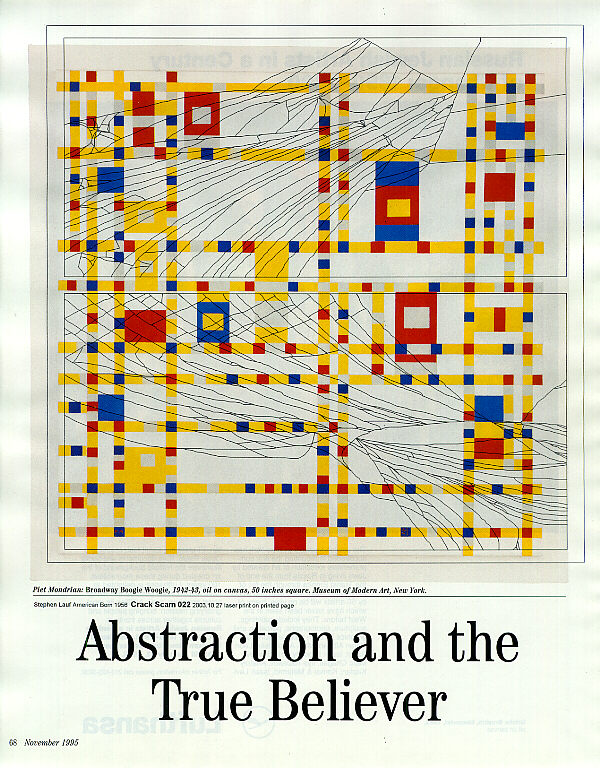
According to Massimiliano Montecuculi, who witnessed the performance, the stage was prepared with "a flock of people partly real and partly feigned" so arranged that, when the curtain had fallen for the opening of the play, the audience saw on the stage another large audience who had come to see the comedy. Two braggarts, played by Bernini himself and his brother Luigi, then appeared on the stage, one facing the real audience and the other the fictitious; and recognizing each other in no time, they went on to claim, each in turn, that what the other saw as real was actually illusory, each firmly convinced that there was no more than one theater with its audience in that half he was facing. The confusions of realities in mirror image thus heightened, the two firmly decided "that they would pull the curtain across the scene and arrange a performance each for his own audience alone." Then the play was performed to the real audience, that is, the main act to which that preceded was only a pleasant prelude. But through the play another performance was supposed to be taking place simultaneously on the second stage introduced by Luigi; the play was, in fact, interrupted at times by the laughter from those on the other side, as if something very pleasant had been seen or heard.
Within the original text there is also a list of existing ruins from the site either in situ or in fragments. Again, this list offers the best possible source for veracity when it comes to establishing which buildings actually once existed vs. which were fabricated by Piranesi himself. I will use this list as part of the information that is presently available for each building. Furthermore, there is a "catalogo" which lists all the literary references available for the buildings that once existed within the Campo Marzio. It would be a wonderful project to collect the actual texts pertaining to each building, and then offer the text in conjunction with the plan of the building. This will greatly enhance the illustrated glossary, in fact, the final documents will be more like a Campo Marzio encyclopedia.
At the end of the play, the two braggarts reappeared on the stage together to reaffirm the "reality" of the illusion. Having asked each other how they fared, the impresario of the fictitious performance answered nonchalantly that he had not really shown anything but the audience getting up to leave "with their carriages and horses accompanied by a great number of lights and torches." Then, drawing the curtain, he displayed the scene he had just said he had shown to his audience, thus rendering complete the incredible reversal of reality and illusion to the confused amazement of the real spectators, who were now finding themselves ready to leave and caught in the enchanting act of feigning the feigned spectators.
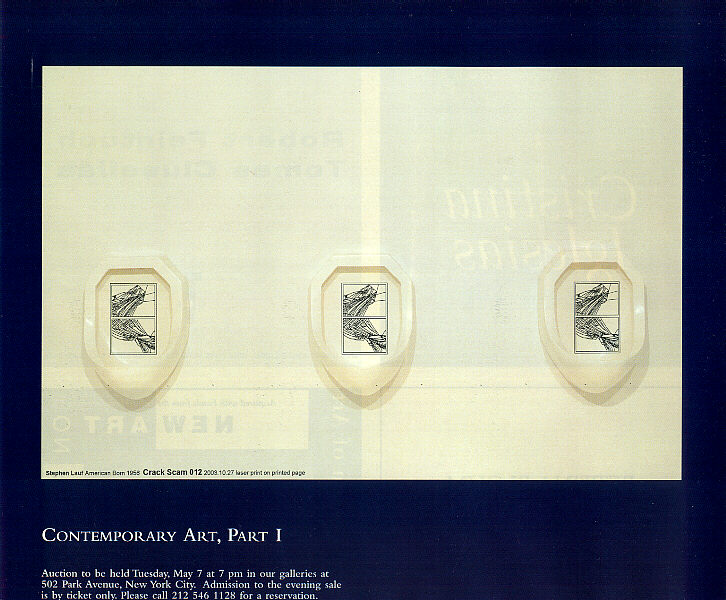
The Basilica Neptuni seems to be a building that Piranesi 'played' with within the Ichnographia. According to Nash's Pictorial Dictionary, Palladio drew a plan of the Basilica Neptuni (as illustrated therein), and Piranesi obviously knew this plan because he used it [and labeled it Xystus] within the Ichnographia. In my experience, whenever Piranesi makes what seems to be an obvious mistake within the Ichnographia, that's usually a sign that Piranesi is playing a(n inversion) game. That may not be the case here, but you should at least be aware of the (intentional?) transposition of buildings.
Of course, the Baroque style continued beyond Bernini--I believe even the double porticos of St. Peter's Square were done after the above performance. All the same, Bernini's theatrical performance manifests the Baroque's consummate ending. Within his double theater Bernini capsulized the beginning of Western culture's new bifurcation of the real and the illusory, introduced mirroring as a henceforth dominant (post) Baroque (stylistic) theme, and, at base (or should I say at the ultimate end), inverted reality into a reenactment of its own illusory mirror (-- is this perhaps also the genesis of historiography?).
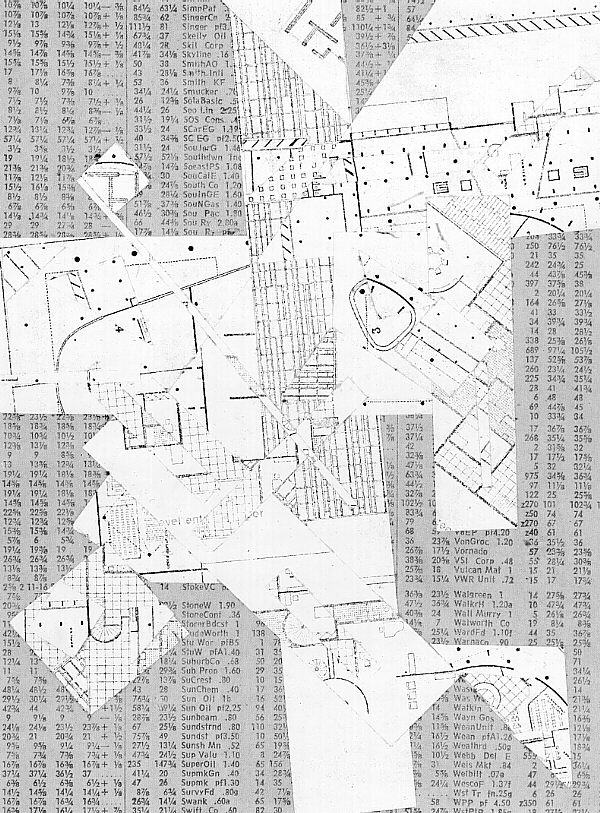
| |
...the role that the diaphragm plays in birth. This relates to pregnancy. The plane of the present passes through the area of pregnancy between the years 770 A.D. and 3090 A.D. The diaphragm occurs in the human body, the Timepiece, at the same time that pregnancy ends and birth occurs. This birth then occurs and coincides with the transition from metabolism to osmosis.
I remember those collages in Education of an Architect I from back in the late 1970s; had no idea who did them back then, and vaguely recall later learning they were by Libeskind. I could probably find some very old "xerox" copies if I looked hard enough. Now, in retrospect, I'd say they had a strong, albeit subliminal, influence on some of my operations. And add to that an early CAD training (1983), the whole 'cut and paste' ethos of computer processing, along with the overall ease of data manipulation, then opened a whole new field with respect to architectural drawing.
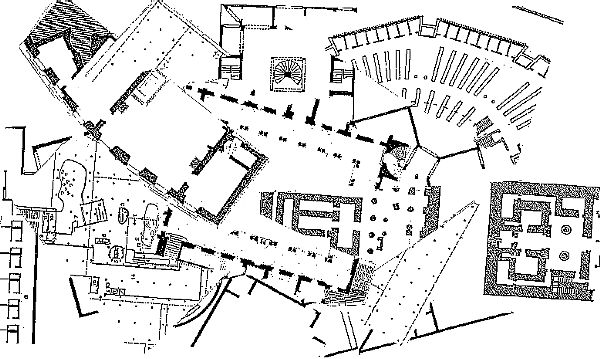
Elia Zenghelis is also creditied as designer of the Parc de la Villette competition project.
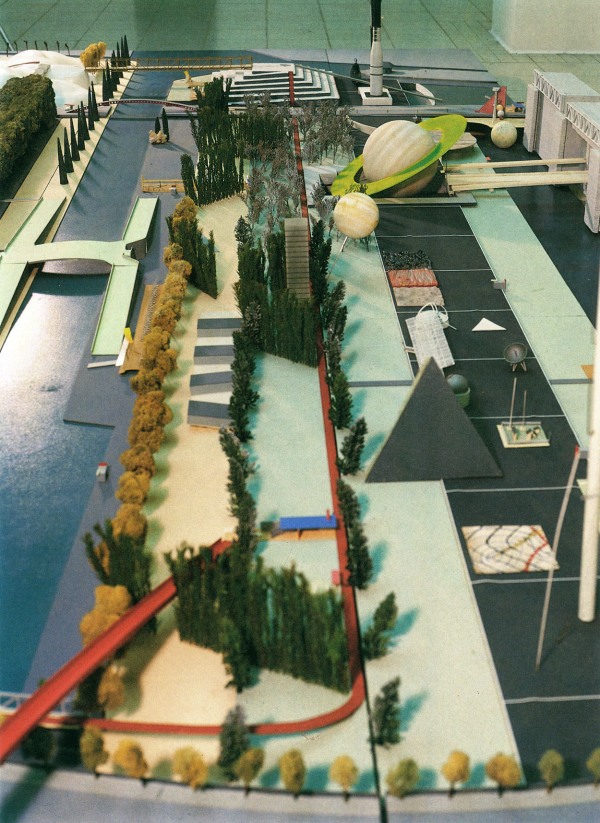
Essentially, beyond the Baroque (and still often in our own modern times) architecture at its best is very sophisticated theater, keeping in mind that theater is one of the earliest forms of (man made) reenactment.
"In commenting on his creation, which he acknowledged to be a modest and slightly silly contribution to the fledging field of natural-language processing, Weizenbaum observed how easy it is for computer programmers to make machines "behave in wondrous way, often sufficient to dazzle even the most experienced observer." But as soon as a program's "inner workings are explained in language sufficiently plain to induce understanding," he continued, "its magic crumbles away; it stands revealed as a mere collection of procedures, each quite comprehensible. The observer says to himself 'I could have written that.'" The program goes "from the shelf marked "intelligent" to that reserved for curios."
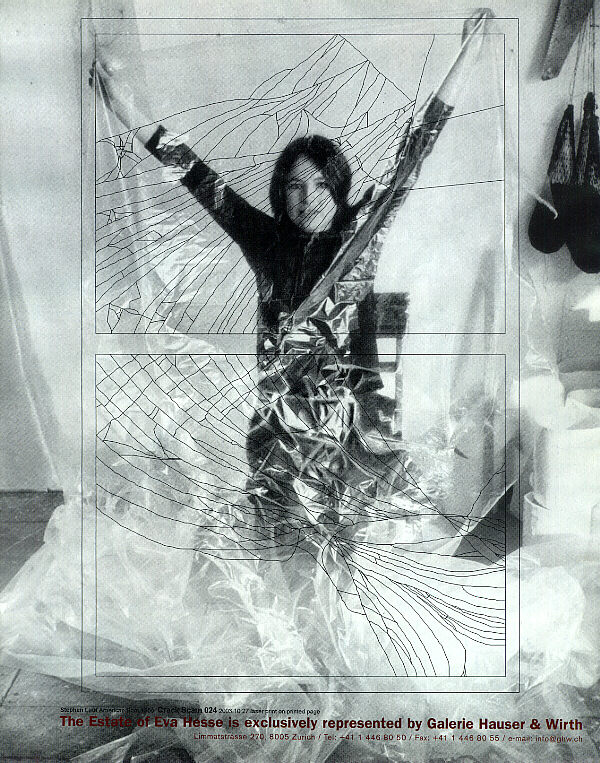
With regard to "I could write (do) that," is this what happens when architecture theory is written in plain language? And, conversely, is some architecture theory abstruse so others think (implicitly) "I couldn't do that"?
| |
13102701 Q Group site plan IQ3-6 2120i35
15102701 IQ band grid Northeast Philadelphia Cubist ICM outlines
3392ui51
15102701 OMA ECP Lab City Paris
16102701 Pantheon Paradigm Parkway Interpolation plans IQ15/19 243bi16
16102702 ICM IQ15 plans for Pantheon Paradigm 243bi17
16102703 ICM IQ19 plans for Pantheon Paradigm 243bi18
16102704 ICM IQ15/19 plans for Pantheon Paradigm 243bi19
17102701 Hadrian's Villa Villa Rotonda Ury House Mount Pleasant Palace of Versailles plans 206ki08 b
17102702 Whitemarsh Hall floor plan garden plan site plan image 2141i07 b
17102703 Whitemarsh Hall floor plan garden plan Palace of Versailles plan 2141i08 b
18102701 Steven Holl CIFI Building Beijing
21102701 Monticello plan elevation 2111i03
|





